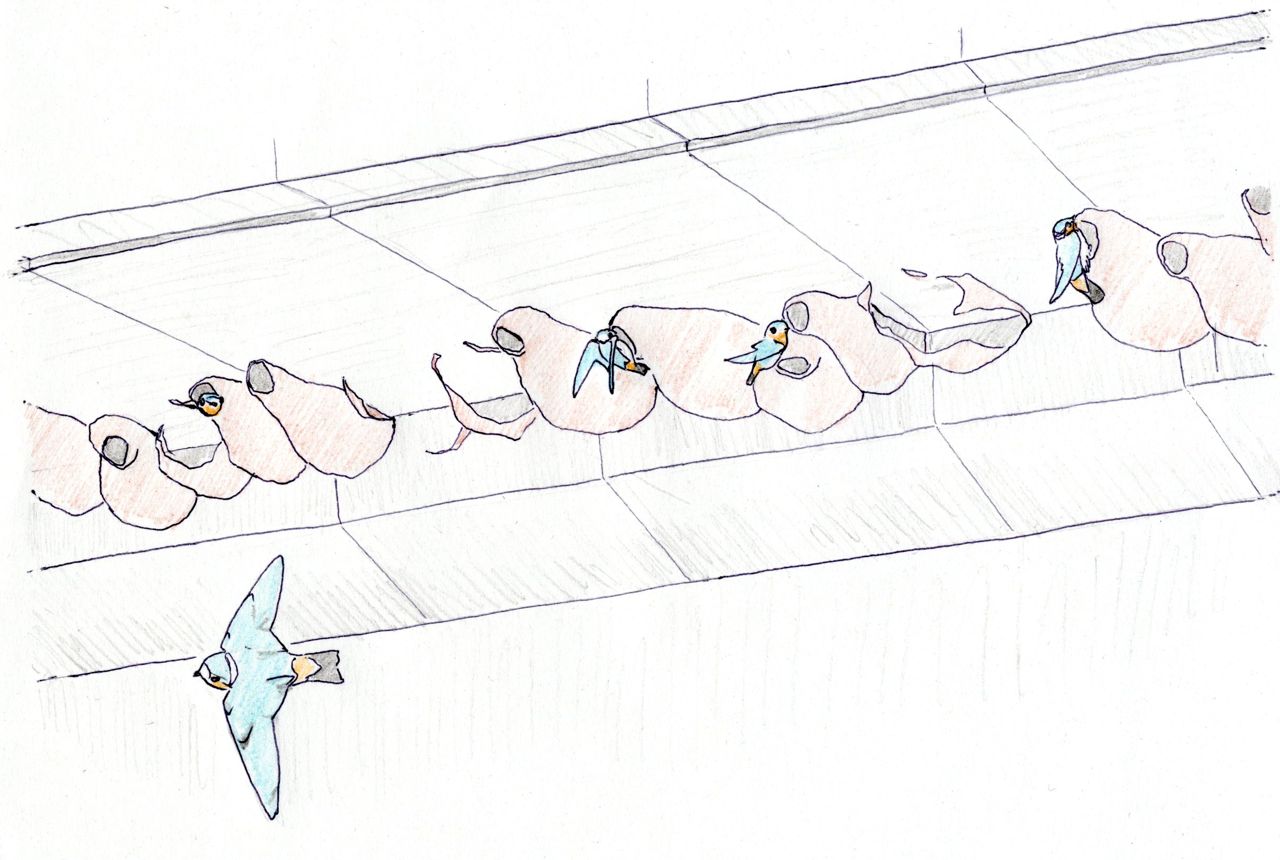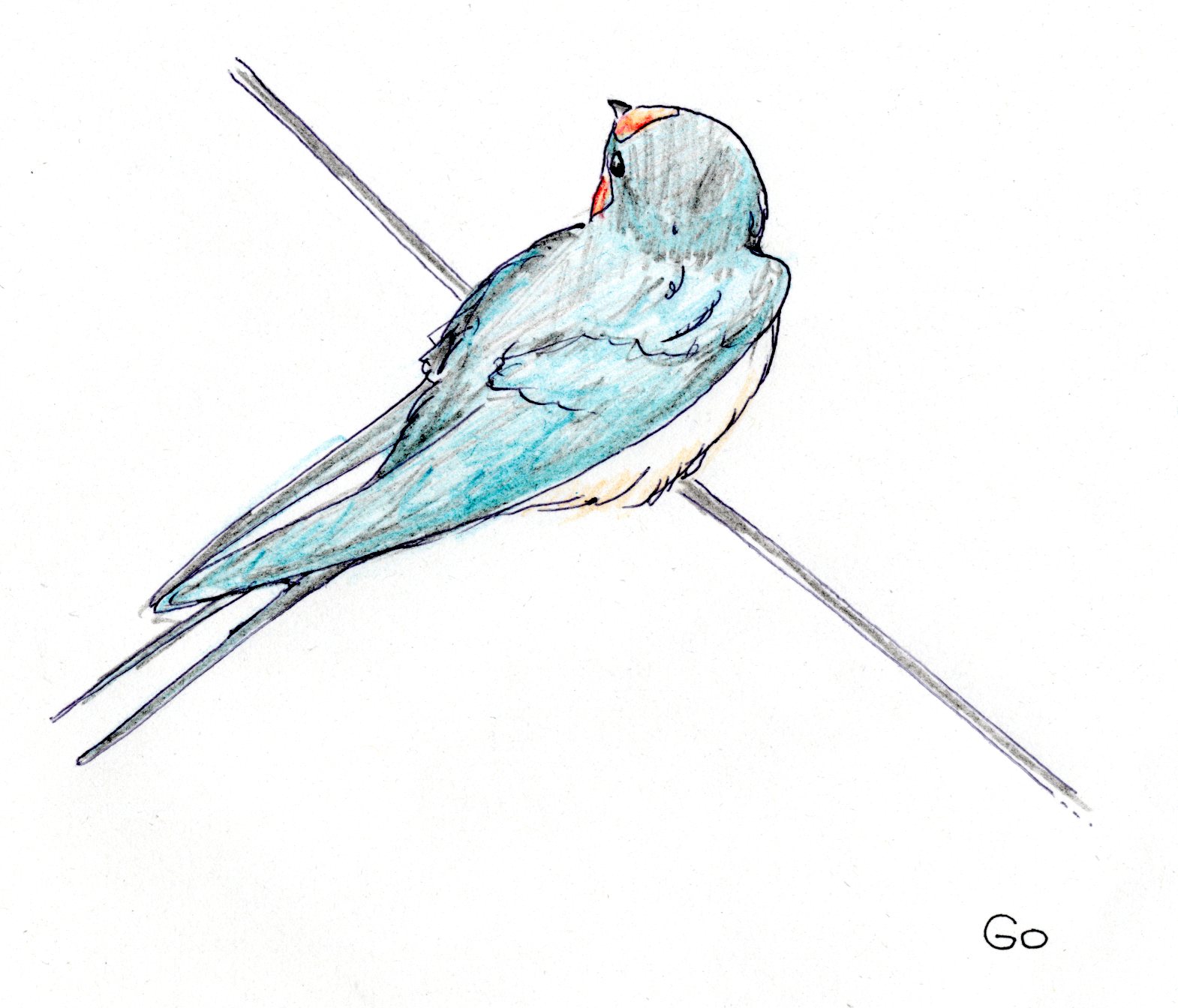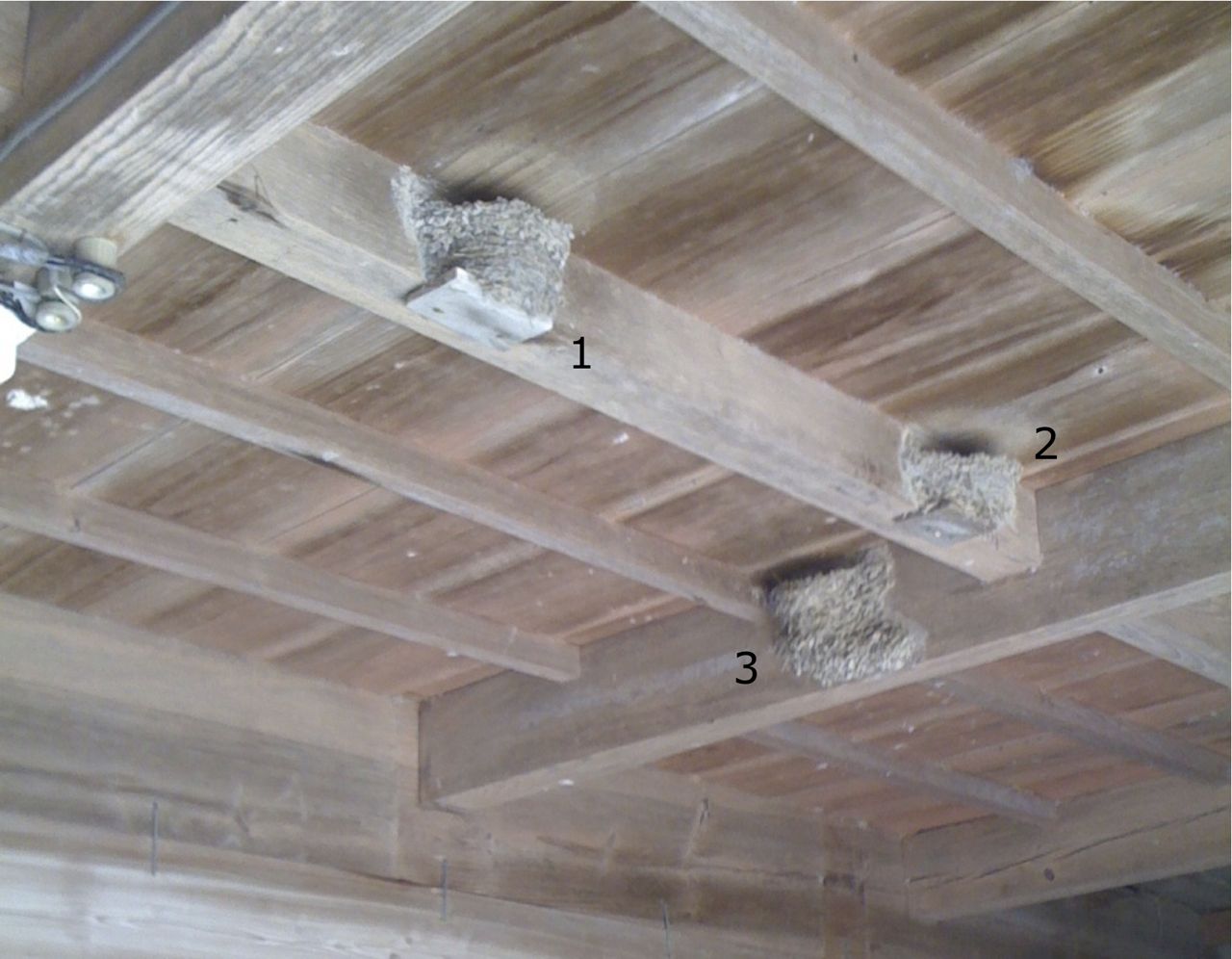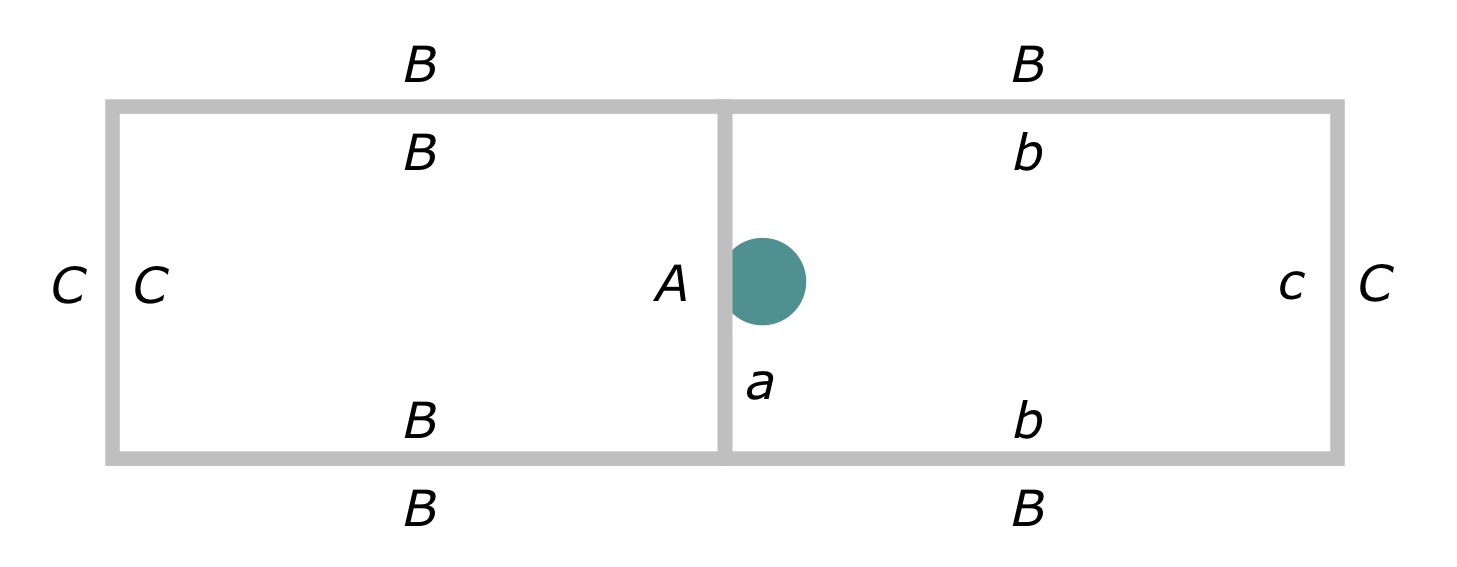|
updated: October 10, 2011 go fujitaecology, animal behavior & conservation my study Ecological and evolutional processes generating colonial and solitary breedings in birds Why do some species of birds often establish huge colonies at particular sites while other species largely space out their nests? In other words, how does the diversity of spatial patterns in bird nests arise? This is my question. 
barn swallows To explore this question, I focus on a loosely colonial species, barn swallows. They establish colonies but their nests scatter within the colonies, and they often nest solitarily also. As a first step of the study, I investigated spatial patterns of swallow nests in an agricultural landscape, a typical breeding habitat of swallows, located at south Kanto region, central Japan. 
Through the field studies, I detected the following patterns in nest site selections of swallows: 1. clumping patterns at large scales, and 2. tendencies to nest on sites hidden from neighbors. 1. Clumping patterns at large scales (Fujita & Higuchi 2005a) Spatial pattern in nests of barn swallows seems to be neither highly clumping nor clearly spacing out. Some of them locate close, e.g. less than 10 cm, to the neighbors, whereas some keep a distance, e.g. more than 100 m, from the neighbors. Unfortunately, there was no study on spatial patterns in swallow nests at multiple scales. I tried to record locations of all swallow nests in a 2.1 x 1.3 km area, and carried out a spatial analysis at multiple scales (L-function analysis). There was a tendency that swallows preferred to nest on a site located at 10 - 200 m apart from other nests when I compared the spatial pattern of swallow nests with these of potential nest-sites like residential houses, office buildings and cattle barns. This suggests that, if swallows nest on a site located at these distances from other nests, they may have an advantage over swallows nesting on other locations, more than 200 m separate from others. However, there is no hypothesis that explains how birds reap the benefits from the neighbors nesting on sites somewhat far, e.g. 100 m apart, from the nests. 2. Nesting on a site hidden from neighbors (Fujita & Higuchi 2007) Even in dense colonies, birds often keep away from other nests. Negative interaction among the neighbors like offspring predation committed by neighbors is a key to explain the phenomena. That is, to decrease intensities of the interactions with neighbors, birds keep distances from neighbors. Many studies paid attention to 'distance' itself as a factor that is likely to alter intensities of interactions among neighbors. And many studies showed that, when birds space out the nests within colonies, the interactions among neighboring nests decrease. However, spatial patterns of nests within colonies do not always seem to be spacing out clearly, especially for these in loose colonies. I carried out analyses on spatial patterns of swallow nests within loose colonies (L-function analysis), and showed that they were not spacing out. Rather, they were at random. This suggests that there are other factors affecting spatial patterns of nests within loose colonies. As a possible factor other than distance, I focus on 'visibilities' from the neighbors because birds are likely to use their sights for interactions with others. That is, I hypothesized that, if birds nest on sites hidden from neighboring nests, the interactions with the neighbors might decrease. To test the hypothesis, firstly I analyzed whether swallow nests tend to locate at sites hidden from neighbors. Because swallows primarily establish colonies in cattle barns in the study site, I compared characteristics between the barns with and without colonies using generalized linear regression models. The results suggested that swallows preferred cattle barns that have the horizontal ceiling. In these cattle barns, swallows nest on beams that divide the ceiling into many rectangular sections (fig 1). 
I used two adjacent rectangular sections of the horizontal barn ceiling as the unit of analyses (fig 2), and detected that swallows prefered to nest on a site hidden from neighbors. 
In the analyses, I focused on the beams that were equidistant from the existing nests. For instance, in fig 2, there are a total of four beam sides shown by an uppercase C or a lowercase c. These are at the same distance from the existing nest (shown with a green circle); three of them are hidden (as shown by C), and one is in-view (c) from the existing nest. In this case, if swallows randomly choose a beam side, 75% (3/4) of the beam sides used by swallows are likely to be hidden ones. I used this proportion as the expected value. On the other hand, among more than 100 nest sites I observed, 12 sites were belonged to this distance category (C-c), and all of these were hidden from neighbors. Based on the expected proportion (75%) and the observed proportion (12/12, 100%), and using the Binomial test, I computed the probability that the observed proportion occur at random: p=0.03. That is, the observed proportion was rarely occuered through random selections among the beams located at the same distance from the exsiting nest. In other words, they preferred a site hidden from neighbors. In addtion, I obtained the same tendecies of nest-site selection by swallows in other combinations of beam sides at the same distances (A-a or B-b) from the existing nests. However, there is no study to show birds can actually decrease intencities of interactions with the neighbors through nesting on a site hidden from neighbors. In addition, of course, we do not know what risks are diminished through the behavior. why swallows prefer to nest on sites hidden from neighbors? (Fujita & Higuchi 2011) To assess the benefits of nesting at a site hidden from neighbours in a loosely colony of barn swallows, I carried out two field experiments, (a) obstruction removal and (b) mirror placement, both replicating a situation in which a nest is made visible from another nest. (a) Obstruction removal experiment Before the spring arrival of the swallows, I moved old nests to sites within the visual range of other old nests and then set an obstruction made of paper or wood (45 x 15 cm) between the nests. When both the old nests had been occupied by swallows, I conducted the experiments. The obstruction was removed only during the experiments. I carried out the experiments on 13 pairs of nests. (b) Mirror placement experiment A 15 x 6 cm mirror was set in front of a nest as the manipulated condition, whereas placement of a piece of white paper of similar dimensions was used as the control condition. The mirrors mimicked the presence of another bird on another nest by reflecting an image of the focal bird back to itself. Experiments were conducted on 33 nests. Under manipulated conditions in both experiments, females increased the length of time they stayed at their nests during the egg-laying and late incubation stages, while males extended their duration of stay during the egg-laying and early nestling stages in mirror placement experiments only. The results suggest that barn swallows conceal their nests to reduce fitness costs imposed by neighbours nesting in view and that hiding the nest can reduce the amount of time spent guarding the nest during certain stages of the breeding period. In addition, accoridng to these results, conspecific brood parasitism is likely to be a potential cost of colonial breeding for female swallows, and extra-pair copulation might be so for male swallows. I suggest that focusing on the benefits of nesting at sites hidden from neighbours may provide insight into the mechanisms governing spatial patterns within loose colonies of other species. Furthermore, this concept may explain variation in spatial patterns of nests not only within loose colonies, but also within dense colonies. and now.. I focus on the question:
|